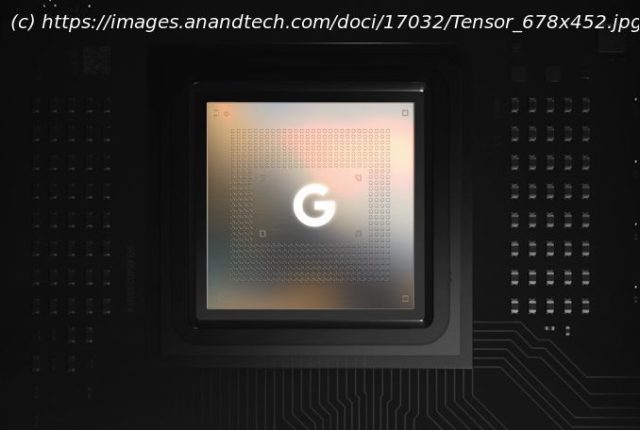It’s been about two weeks since Google officially announced their newest flagship devices in the form of the Pixel 6, and Pixel 6 Pro . The …
It’s been about two weeks since Google officially announced their newest flagship devices in the form of the Pixel 6, and Pixel 6 Pro. The two new Pixel phones are inarguably Google’s largest shift ever since the Pixel series was introduced, showcasing major changes in essentially every aspect of the devices, sharing very little in common with their predecessors besides the Pixel name. Featuring brand new displays, camera systems, body designs, and internal hardware at seemingly extremely competitive pricing, the phones seem to be off to an extremely good start and competitive positioning Google hasn’t had in a long time. One of the biggest changes, and most interesting to our readers, is the fact that the Pixel 6 and Pixel 6 Pro come powered on by Google’s own “Tensor” SoC. And it’s here where there’s quite a bit of confusion as to what exactly the Tensor is. Google explains that the Tensor is Google’s start in a journey towards the quest of enabling new kinds of workloads, which in the company’s words, were simply not possible or achievable with “standard” merchant silicon solutions. Taking advantage of Google research’s years of machine learning experience, it’s a chip that’s heavily focused towards ML as its primary differentiating feature, and what is said to allow the Pixel 6 phones to have many of the new unique feature exclusive to them. Today, we’re giving the Tensor SoC a closer look. This includes trying to document what exactly it’s composed of, showcasing the differences or similarities between other SoCs in the market, and better understanding what kind of IPs Google has integrated into the chip to make it unique and warrant calling it a Google SoC. Officially, per Google’s own materials, the Tensor is a Google SoC fully designed by the company. And while the overall truth of this will vary based on your definition of “design”, the chip follows a seemingly close cooperation between Google and Samsung LSI, in the process blurring the lines between a traditional custom design and semi-custom design-for-hire chips such AMD’s console APUs. Starting off at the very highest level, we have the actual name of the SoC. “Google Tensor” is quite abstract in that, for the time being, the chip doesn’t have any particular specific model number attached to it in terms of official marketing. So whether the next-gen will be marketed “Tensor 2” or something else will remain to be seen. Internally, Google calls the chip the “GS101”, and while I’m not entirely sure here what GS stands for, it’s likely Google SoC or Google Silicon. For quite some time now we’ve also heard the “Whitechapel” being reported, although I’ve seen no evidence that this was a reference to the actual chip but in the very early stages. On the silicon side, the chip has another model number, with the SoC’s fused chip identification following Samsung’s Exynos naming scheme. Here we find the chip has an ID of “0x09845000”, which corresponds to what would be S5E9845. The latest Samsung LSI SoC, for reference, is the Exynos 2100, which is identified as the S5E9840. Of course, why would the Google SoC follow an Exynos internal naming scheme? That’s where we can begin to see some of the provenance of the design. It’s been widely reported for some time that a few years back, Samsung opened up itself to semi-custom silicon design offers. A piece from August 2020 from ETNews seems to correctly describe Samsung’s business plan and how it pertains to the Google chip (as well as describing a Cisco design win): “Samsung Electronics is set to manufacture semiconductor chips for Cisco Systems, which is the top network equipment maker in the world, and Google and it is responsible for the entire semiconductor manufacturing process from design to production. […] Samsung Electronics is currently working on a development phase that involves chip design. […] Samsung Electronics also obtained an order from Google regarding manufacturing of more than one chip. It is heard that Google requested a semiconductor that will go into a sensor that can measure body movements rather than for processors that go into current IT devices and an unprecedented application processor (AP). […] Samsung Electronics is carrying out a different approach as it looks to actively utilize its technologies in chip design. Its strategy is to provide “customized” technologies and features that its customer needs even from a design stage and secure consignment production as well. What’s important here is the latter description of the process – where rather than simply acting as a pure-play contract manufacturer, Samsung is acting as a fully engaged party in the design of the silicon. This could very much be compared to an ASIC design service, with the exception being that Samsung is also a merchant SoC vendor as well as a manufacturer for the silicon, something that’s quite unique in the industry, and thus something of a special situation. Having the chip in our hands now, as well as having the open-source insight into the characteristics of it, we can start breaking down what exactly the Google Tensor is: In the very fundamentals of what an SoC is, the Google Tensor closely follows Samsung’s Exynos SoC series. Beyond the usual high-level blocks that people tend to talk about in an SoC, such as CPUs, GPUs, NPUs, and other main characteristics, there’s the foundational blocks of a chip: these are the fabric blocks and IP, the clock management architecture, power management architecture, and the design methodology of the implementing those pieces into actual silicon. While on paper, a Samsung Exynos, a MediaTek Dimensity or a HiSilicon Kirin, or even a Qualcomm Snapdragon (on the CPU side) might have similar designs in terms of specifications – with the same high-level IP such as Cortex CPU or Mali GPUs from Arm – the chips will still end up behaving and performing differently because of the underlying SoC architecture is very different. In the case of the Tensor, this “chassis” builds upon the IP Samsung uses on their Exynos SoCs, utilizing the same clock management and power management architecture. Going further up in the IP hierarchy we find additional similarities among high-level IP blocks, such as memory controllers, fabric IP, PHY IP for all kinds of externally facing interfaces, and even the larger IP functional blocks such as ISP or media decoders/encoders. The fun thing is that these things are now publicly scrutinizeable, and can be compared 1:1 to other Exynos SoCs in terms of their structures. This leads us to Google’s claim of the Tensor being their own design – which is true to an extent, but how true that is can vary based on your definition of “design” and how in-depth you want to go with that. Although the Tensor/GS101 builds upon Exynos foundational blocks and IPs – and likely was even integrated and taped-out by Samsung – the definition of the SoC is in Google’s control, as it is their end-product.






